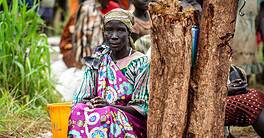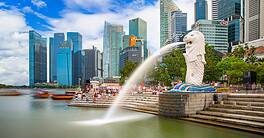Enticing foreign investors is urgent for the suddenly reformist Saudi government. But will it push economic reform far enough, fast enough?
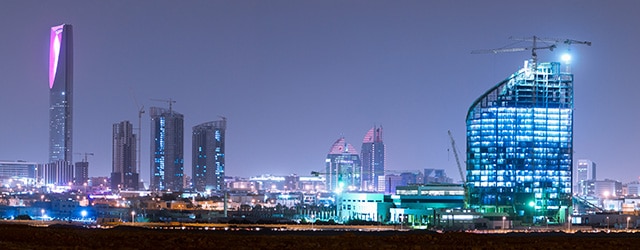
Saudi Arabia may be open for business; but clinching new foreign investment will be mission-critical if the kingdom is to wean itself from its heavy dependence on hydrocarbon. Time is of the essence. Last year the Saudi Arabian economy contracted 0.8%, Capital Economics estimates; and despite lavish publicity, Crown Prince Mohammed bin Salman’s grand Vision 2030 plan has not sparked the investment surge some envisaged.
FDI to Saudi Arabia fell 80% in 2017, to $1.4 billion, according to UNCTAD’s World Investment Report 2018, which noted Saudi Arabia’s share in FDI to West Asia collapsed from 53% in 2009 to 27% in 2015 and a mere 6% in 2017. Foreign investors remain apprehensive about the Saudi story, and particularly bemoan a lack of transparency, citing last November’s unprecedented roundup of several hundred prominent figures, including high-profile billionaire investor Prince Alwaleed bin Talal.
Still, despite the misgivings, institutional investors could soon return to the table as rising oil prices provide Riyadh maneuvering room for further reforms. In March, the kingdom was promoted to secondary emerging-market status by the FTSE Russell, a move that tacitly acknowledges investor-friendly market reforms. Saudi stocks are set to be included in the benchmark FTSE Global Equity Index Series in phases from March 2019 and will eventually constitute around 2.7% of the FTSE Emerging Index.
That could rise to 4.6% in the event the hugely anticipated, much delayed Saudi Aramco IPO is listed on the Saudi Tadawul stock exchange, which has a market capitalization of just over $500 billion. In June, market-index provider MSCI upgraded Saudi Arabia to emerging-market status. The country will be included in MSCI’s Emerging Markets Index in two steps, in May and August next year, with a weighting of approximately 2.6% of the index with 32 securities. “We estimate emerging-market upgrades by both FTSE and MSCI will attract circa $30-$45 billion worth of inflows into Saudi by the end of 2019,” says Mohamad Al Hajj, head of MENA strategy at Egyptian investment bank EFG Hermes, “of which circa $15 billion [will be] passive.” Passive investments track indexes and include exchange-traded funds and index-tracker funds.
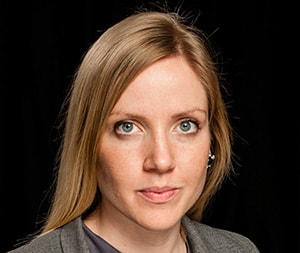
Hawthorne, Stratfor: Saudi Arabia is continually reassessing and shifting small aspects of its legal framework. |
Such a surge in capital inflows could bump up valuations, making Saudi stocks less attractive, analysts warn. For now, the kingdom wants foreign investors to pay less attention to such potential complications and focus instead on its showcase project, the $500 billion Neom megacity. Depending on your view, Neom is either transformational or a trophy project with uncomfortable echoes of “Ozymandias,” Percy Bysshe Shelley’s poem of unbridled imperial ambition and collapse.
The futuristic city is planned as a technological leviathan spread over 26,500 square kilometers across three countries on the temperate Red Sea and the Gulf of Aqaba. The brainchild of Crown Prince Mohammed, Neom is to be powered solely by harnessing wind and solar resources. The story is compelling: Neom’s 468 km coastline is located on a major trade artery traversed by 10% of world trade. Seventy percent of the world’s population will be within eight hours travel to the megacity. Neom is clearly aimed at convincing foreign investors that the kingdom has a vision and a future beyond the last barrel of oil. Whether it attracts the billions of dollars of investment required or simply becomes a magnet for expatriates remains to be seen, however.
The project is backed by the kingdom’s Public Investment Fund, which the crown prince chairs, and which has rapidly become a high-profile investor, snapping up a $3.5 billion stake in Uber and forging a major alliance with Japan’s SoftBank. Yet, uneasy parallels are being drawn between Neom and another in-progress megaproject, the $50-$100 billion King Abdullah Economic City. Ground was broken in December 2005. When completed in 2020, KAEC is expected to be larger than Washington, DC. But the project has failed to attract significant foreign investment and languishes in a semicompleted state. The government is hoping its new economic strategy and support from the powerful crown prince will prompt investors to see KAEC in a better light.
But the business argument for Neom and other megaprojects is still to be proven, says Steffen Hertog, associate professor at the London School of Economics and Political Science. “Most companies that set up shop in Saudi Arabia have done so to serve the consumer market or to partner with state-owned enterprises in energy and feedstock-intensive industries, in which Saudi Arabia has a comparative advantage,” he observes. “The kingdom’s competitive advantage outside of these sectors is less clear.”
Farther to Go with Reforms
Critics also argue that nascent economic reforms do not go far enough. Structural changes are needed to stimulate the nonoil sector, they say, which continues to show weakness. The Purchasing Managers’ Index for Saudi Arabia, which covers the manufacturing and service sectors, dropped to a fresh record low in April.
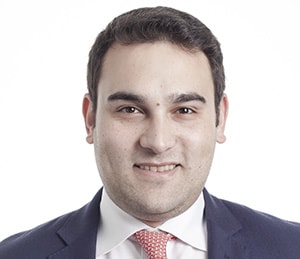
All Hajj, EFG Hermes: Emerging-market upgrades by both FTSE and MSCI will attract circa $30-$45 billion worth of inflows into Saudi by the end of 2019. |
Proponents of economic liberalization argue that additional deregulation and further easing of limits on foreign ownership and labor mobility may not be as high-profile as Neom but do more to garner long-term investment. The government recently launched a major privatization program that will be an early test of investor appetite. In April, the Council of Economic and Development Affairs approved a plan to sell five government assets by 2020 , which is projected to produce 35-40 billion Saudi riyals ($9.3 billion to $10.6 billion) in revenue, according to Riyadh-based Jadwa Investment. Privatization plans currently underway include a part of the Saline Water Conversion Corporation; milling operations of the Saudi Grains Organization, to be divided into four separate entities; sports clubs; Saudi Post services and transportation projects. More than 100 further privatization opportunities have been identified in various sectors; however, the legal framework for foreign participation in privatization is still in development.
Making regulation more reliable and improving governance are critical to making privatization a success, and to the kingdom’s FDI push in general. “One major risk [for] investors … is that the regulatory framework in Saudi Arabia is still flexible and far from being codified. Saudi Arabia is continually reassessing and shifting small aspects of its legal framework,” says Emily Hawthorne, MENA analyst at Stratfor. Foreign investors will have to be willing to accept the risk of regulations changing rapidly, if they want to conduct business in the kingdom, she adds.
In the World Bank’s Doing Business 2018 report, Saudi Arabia ranks 92 out of 190 economies for ease of doing business—in stark contrast to the UAE, at 21. In spite of the prospect of further reforms under Mohammed bin Salman, rebooting “Saudi Inc” will be a long and gradual process, says the LSE’s Hertog. “This is because of a relatively heavy bureaucratic environment and human-resource constraints—there are well-trained and motivated Saudi workers, but companies compete hard for them, have to pay premium wages and find it difficult to retain them.”
Pressure is mounting on Riyadh to ensure a stable business environment. The kingdom’s intervention in Yemen, tense standoff with Iran and quarrel with Qatar are major tail risks for investors. Also, the potential for domestic upheaval cannot be ruled out.
There is no shortage of speculation about the short-term outlook for the Saudi economy and the prospects for a smooth transfer of power when the crown prince accedes to the throne. The kingdom needs an endgame that investors can easily digest, if it is to attract FDI beyond the energy sector and fulfill its ambition to create a diversified economy.

